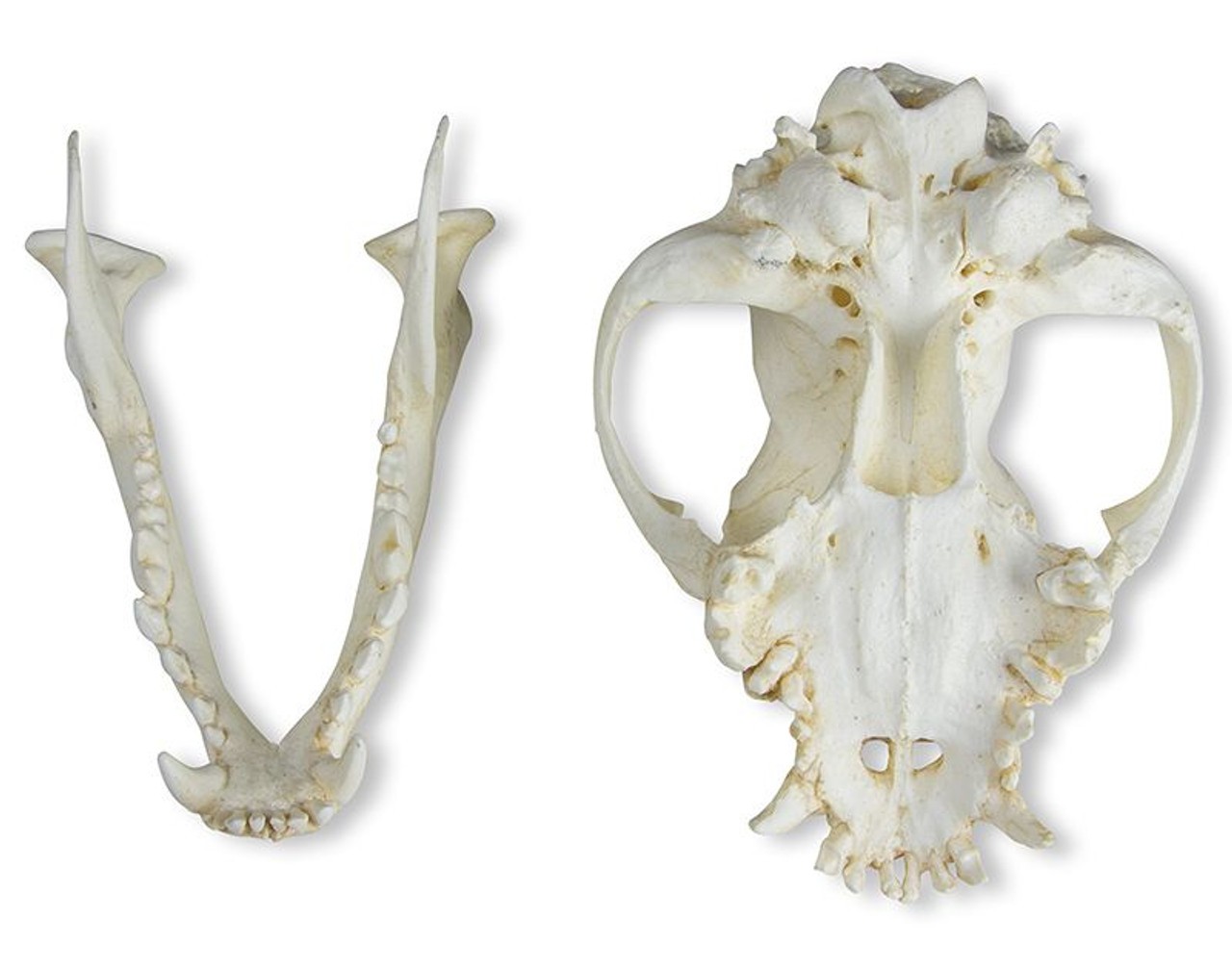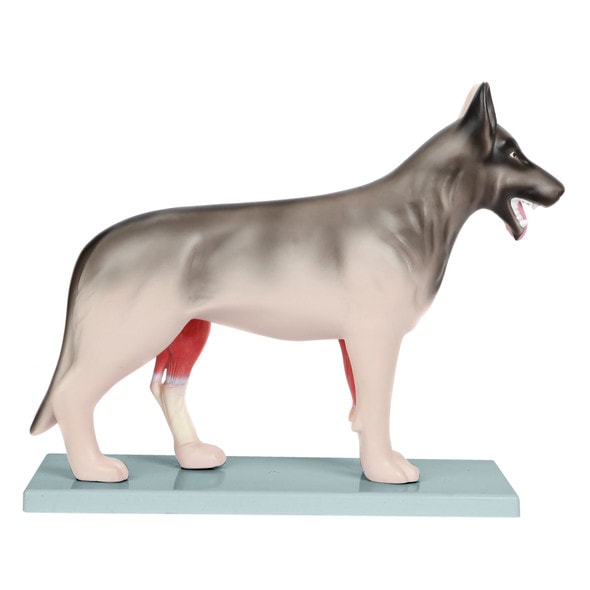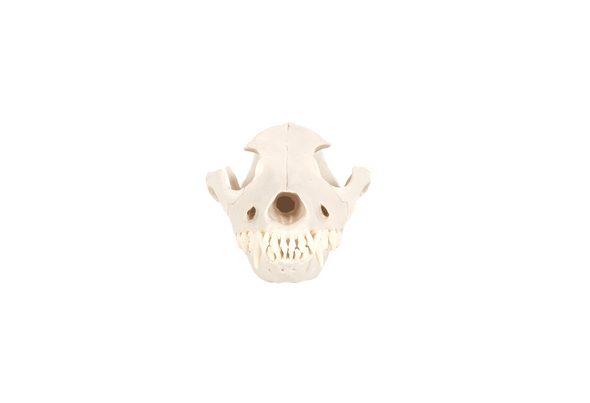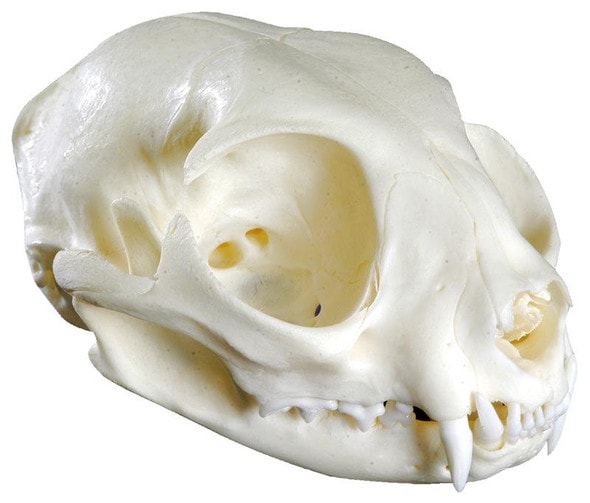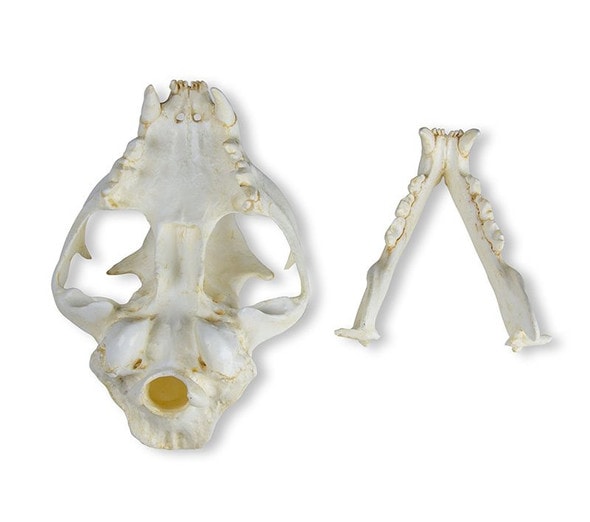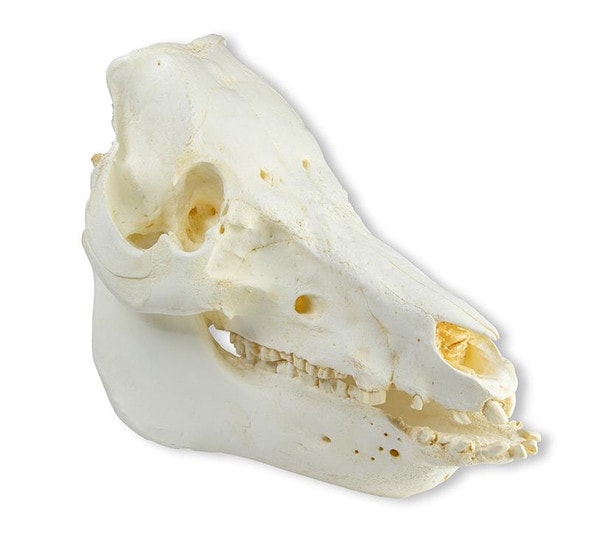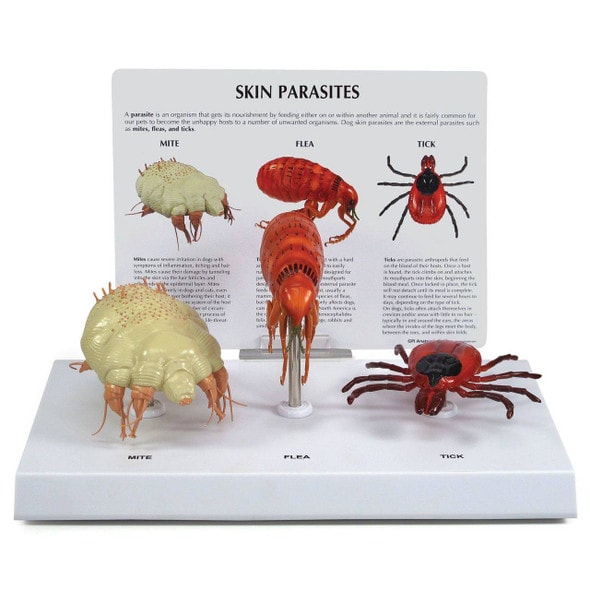Description
Skull of Domestic Dog, Boxer (Canis familiaris): Detailed Description
Overview
The skull of the domestic Boxer dog (Canis familiaris) exhibits distinctive features that are crucial for veterinary professionals and students. The Boxer breed, known for its brachycephalic (short-muzzled) face, presents unique anatomical characteristics that influence both its clinical care and surgical considerations. The lower jaw is removable.
General Characteristics
Cranial Structure
- Cranium: The Boxer has a relatively broad and flat cranium with a pronounced frontal bone. This shape can lead to a more compact cranial cavity.
- Brachycephalic Features: The short, broad muzzle is a defining feature. The frontal bone is shorter compared to mesocephalic or dolichocephalic breeds.
Facial Skeleton
- Nasal Bones: The nasal bones are short and broad, contributing to the flat appearance of the face.
- Maxilla and Mandible: The maxilla (upper jaw) and mandible (lower jaw) are robust. The mandible often appears more pronounced in brachycephalic breeds as a noticeable underbite.
Orbital Region
- Eye Sockets: The orbits are relatively large and round, positioned laterally. The prominent eyes can make them prone to certain ophthalmic conditions.
Zygomatic Arch
- Structure: The zygomatic arch is prominent, providing attachment points for the masseter and temporalis muscles. This feature supports the Boxer's powerful jaw muscles.
Palate
- Hard Palate: The hard palate is broad and short, consistent with the overall brachycephalic structure.
Clinical Considerations
Brachycephalic Obstructive Airway Syndrome (BOAS)
- Nasal Passage: The shortened nasal passages can lead to respiratory difficulties. Understanding the brachycephalic anatomy is crucial for diagnosing and managing airway obstruction.
- Soft Palate: The soft palate may be elongated, contributing to airway blockage.
Dental Issues
- Malocclusion: The pronounced underbite can lead to dental misalignment and occlusion problems. Regular dental examinations are essential.
- Tooth Wear: The robust jaws can cause significant wear on the teeth, necessitating periodic dental assessments.
Ophthalmic Conditions
- Exophthalmos: The prominent eyes are at higher risk for conditions such as proptosis or corneal ulcers.
Trauma and Surgery
- Skull Fractures: The broad and flat nature of the skull can make it more susceptible to certain types of trauma. Precise knowledge of the skull anatomy is important for surgical interventions.
- Surgical Procedures: Surgeons must account for the altered skull shape when planning surgeries involving the oral cavity or cranial structures.
Anatomy for Veterinary Schools
Bone Identification
- Frontal Bone: Located at the forehead; important for understanding the cranial cavity and brain structure.
- Parietal Bones: Form the sides and roof of the cranium; relevant for cranial measurements.
- Temporal Bones: Houses the middle and inner ear structures; critical for auditory health assessments.
- Occipital Bone: Forms the back of the skull; important for neck and head alignment.
Practical Applications
- Radiographic Analysis: Understanding the normal variations in the Boxer's skull is essential for accurate X-ray or CT scan diagnosis.
- Anatomical Landmarks: Identifying key landmarks aids in procedures like intubation or cranial surgery.
Comparative Anatomy
- Breed-Specific Variations: Comparing the Boxer's skull with other breeds helps in understanding breed-specific health issues and anatomical variations.
Summary
The Boxer dog's skull is characterized by its brachycephalic nature, with notable features including a broad, flat cranium, shortened nasal bones, and robust jaw structures. These characteristics have significant implications for veterinary practice, from managing respiratory conditions to addressing dental and ophthalmic issues. Understanding these anatomical details is vital for effective diagnosis, treatment, and surgical intervention.


